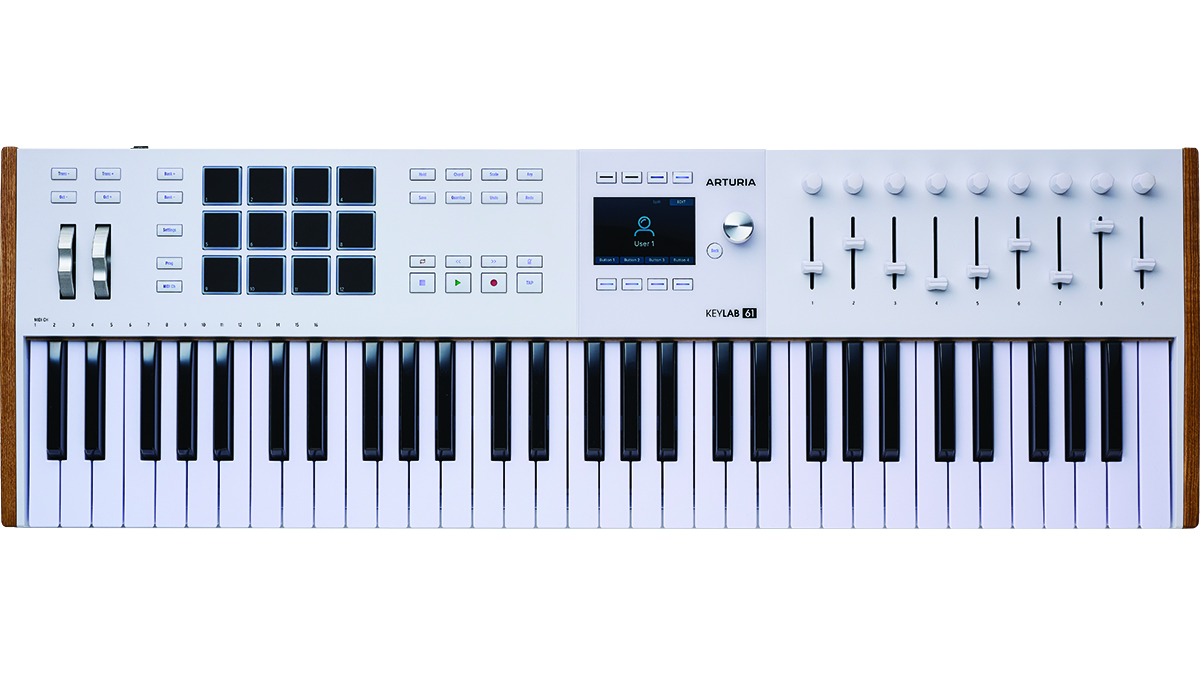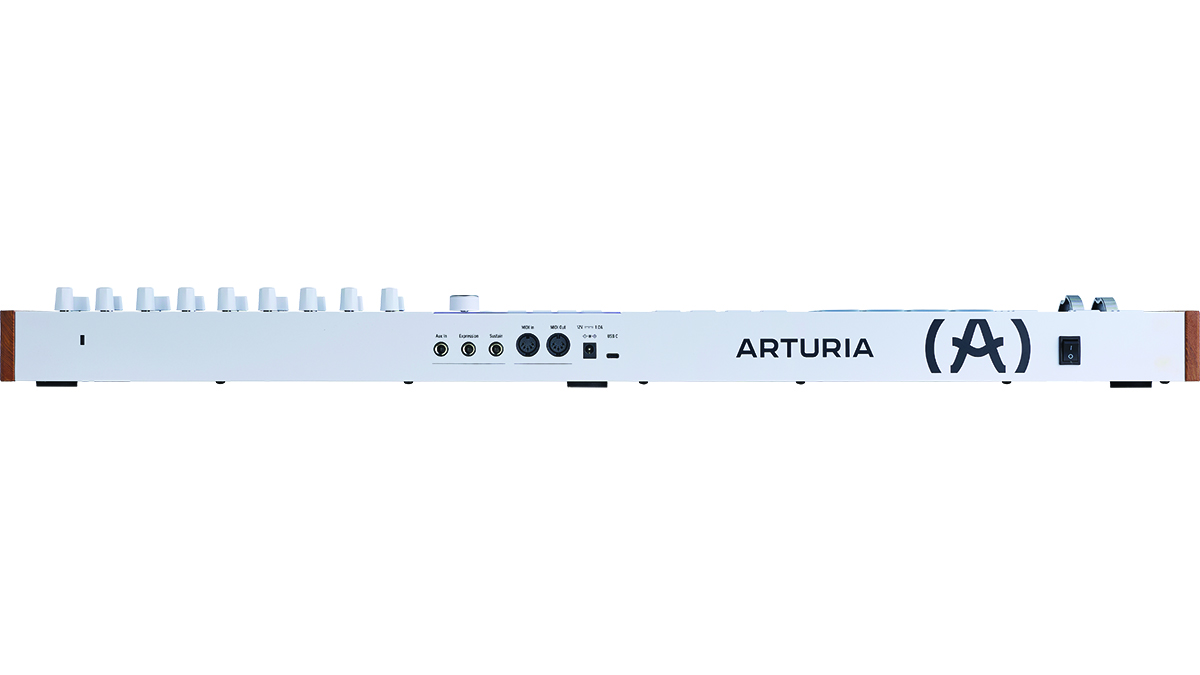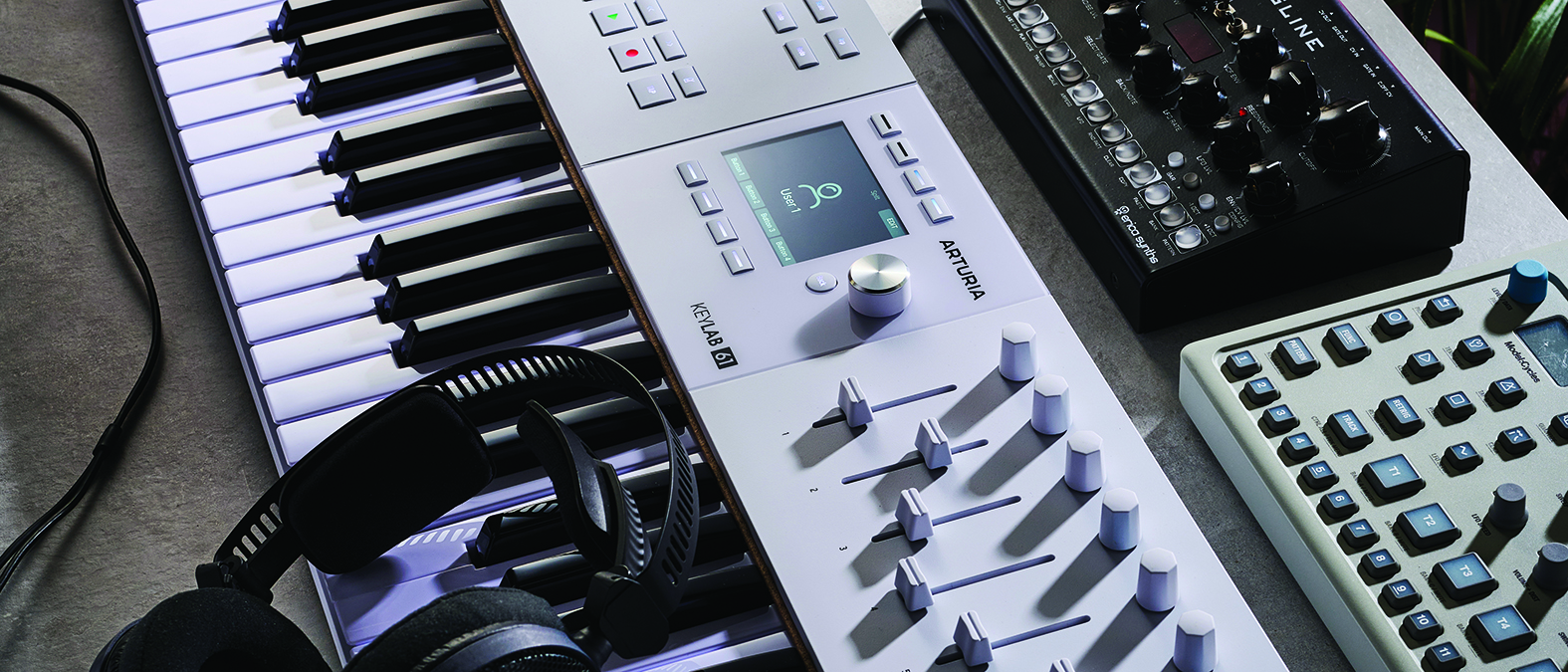MusicRadar Verdict
A new keybed, solid DAW integration, touch sensitive controls, and deep configuration all unified via the new display.
Pros
- +
Excellent new keybed.
- +
Great new colour screen.
- +
Premium construction with genuine beech side-panels.
- +
Solid script-based DAW integration.
- +
Onboard and software-based customisation.
Cons
- -
CV connections removed.
MusicRadar's got your back
Arturia KeyLab 61 mk3: What is it?
Arturia’s flagship keyboard controller range has had a revamp. The KeyLab range are premium keyboard controllers, offering a serious uplift in features and price from Arturia’s more affordable and more compact KeyLab Essential range.
On first impressions, the KeyLab 61 Mk3 (which is what we have for review) has things in common with its predecessor, including nine faders and nine rotary encoders (which dovetail with Arturia’s Analog Lab instrument), dedicated DAW transport controls, a central control section and a high quality keybed. But despite the familiarity, much of this has been redesigned, including the all-important keybed. This new design delivers a wonderfully positive action but is also mechanically quiet. It also includes aftertouch, which is a must for a premium controller.

Arturia KeyLab 61 mk3: Performance and verdict
Visually, the most obvious of the changes would be the new display, which features a high-quality menu driven colour screen with eight contextual buttons and a push button rotary data encoder. Also different are the backlit RGB pads. There are 12 (not 16 as before) and you now have four banks. In the fader section there are no longer selector buttons as these features are handled via the screen. However, the faders and encoders are now touch-sensitive, so you get immediate on-screen feedback of values without having to move them. Excellent stuff.
Overall the new layout is cleaner, more professional and oozes quality, with the genuine beech wood end-panels finishing the job. But despite all these positives it’s worth saying the KeyLab Mk3’s physical connectivity has been downscaled somewhat, with fewer pedal inputs (three not five) and removal of the CV options.

KeyLab Mk3 has excellent software integration with DAWs and software support via their own MIDI Control Centre desktop app, which handles user customisation of encoders and so on. However, customisation via the onboard menu is now much more extensive and coupled with the Chord, Scale and Arp modes and keyboard split options provides a more self-contained approach, if needed.
In terms of DAW integration, dedicated onboard buttons including transport, save, quantize, undo/redo and metronome are further enhanced by DAW-specific scripts for Ableton Live, Bitwig Studio, Cubase, FL Studio and Logic Pro. These provide DAW features via the screen contextual buttons and also pre-mapping of faders and encoders for use with Arturia and native DAW instruments.
From a user perspective, the dedicated DAW scripts vary in features and are at their best with DAWs such as Ableton Live, where all eight screen-contextual buttons are used, and the pads are used for clip selection. For wider compatibility, KeyLab Mk3 also supports HUI and MCU protocols and includes DAW control protocols for Pro Tools, Reaper, Studio One and Reason.
Though the removal of some features is a shame, improvements to its core features are welcome
Finally, KeyLab 61 Mk3 comes with a software bundle, featuring five of their own products (Analog Lab, Mini V4, Piano V3, Augmented Strings and Rev Plate-140) plus Ableton Live Lite, Native Instruments The Gentleman and introductory subscriptions for Melodics and LoopCloud.
All told, KeyLab 61 Mk3 is an impressive update, and though the removal of some features is a shame, improvements to its core features are welcome.
MusicRadar verdict: A new keybed, solid DAW integration, touch sensitive controls, and deep configuration all unified via the new display.
Arturia KeyLab 61 mk3: Hands-on demos
Arturia
Sanjay C
Creative Sauce
Arturia KeyLab 61 mk3: Specifications
- 61-key velocity-sensitive keyboard with aftertouch
- 12 touch/pressure RGB pads
- 12 DAW controls
- Touch assignable encoders and faders
- USB-C-powered/12V input
- Three pedal inputs, sustain, expression and one assignable
- Pitch bend and mod wheels
- Chord, Scale and Arp play modes
- Plenty of DAW scripts
- CONTACT: Arturia
Jon is a London based platinum award winning mixer, producer, composer and club remixer with a diverse CV that spans dance, pop, rock and music for media. He’s also a long term contributor to MusicRadar's music technology tutorials and reviews. Whether working alone or collaborating he usually handles final mixdowns, so you’ll also find MusicRadar peppered with his handy mixing tips.
With its latest free update, Ableton has finally turned Note into the app I always wanted it to be
Technically capable, but struggle to make your tunes sound musical? 5 simple music theory hacks to make your tracks stand out
"Despite its size, it delivers impressive audio quality and premium functions as well as featuring a good selection of inspired sounds": Roland GO:Piano 88PX review














